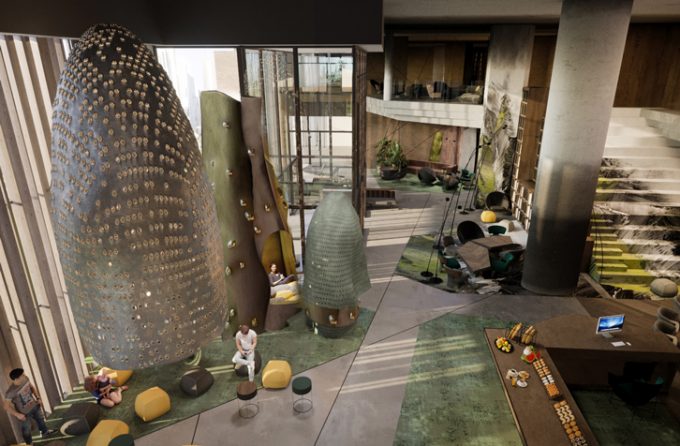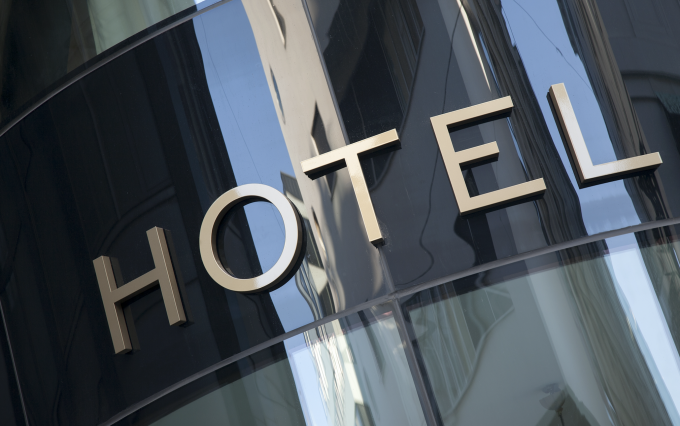
Lobbies still a focal point for hotel design in 2019
It’s a new year, and the design focus for hotels remains on creating lobbies with a neighbourhood feel and making guestroom updates, according to design experts.
Here’s a look at what’s top of mind for hotel designers this year.
1. What areas of the hotel do you see as a good place to start with design upgrades and/or renovations in 2019?
Irina and Olga Sundukovy, founders, Sundukovy Sisters: “Public areas, lobby and restaurant. (The) lobby is becoming more and more of a social hub, and restaurant serve both for hotel guests and locals. Thus, starting renovations within the public areas is a good opportunity to attract new audiences to your hotel.
“We see (the) lobby to become more multi-functional, and as a co-living space neighbourhood. Thus, the layout should be more flexible, fluid (and a place) where guests decide what they want to do in the area. The design of public areas should be intuitive, but should not limit an area to one certain function.
For instance, in our concept for rebranding of a hotel chain, we suggested that functions of public areas change during daytime.
Thus, guests can have a breakfast in a lecture hall sitting on comfortable stairs in the mornings, and in the afternoons the area works as a lounge or lecture hall.”
Claire Richards, senior associate and project design manager, Shift Studio Design: “We would start with the lobby as our first place to design or upgrade.
First impressions are very important and the lobby can set the tone for your stay at the property.
The trend we see for the lobby is to be transformed into more of a clubhouse/living room environment with small groupings for guests to linger and be a part yet separate from others, like the Starbucks phenomenon. The other areas that could be addressed are the food-and-beverage components, transforming them to have a greater emphasis on local culture and cuisine. People want to feel that they are having a unique experience when they travel and this helps them relate to the local area.”
Ashley Kirkland, director, interior architecture, Grizform Design Architects: “The guestroom is a traveller’s home base and where they will spend most of their time during a hotel stay. Updating the guestrooms is an impactful way to bring a new vision and story to the hotel. New casegoods are a great place to start and an opportunity to improve the functionality of the room.
Swapping heavy, bulky dresser drawers for open closets and open shelving instantly creates more visual real estate.
Introducing dynamic furniture allows the room to be personalised to each guest’s lifestyle. A chaise longue with an ergonomic side table becomes the desk for a young professional one day and a cozy reading corner for the next guest.”
2. What types of materials in FF&E do you see trending and where in the hotel are these materials being used?
Irina and Olga Sundukovy: “We see that natural materials (such as) wood, stone (and) metal will be prevailing. (And) less plastic, of course. (There will be) more eco-friendly materials and the recyclable ones. We love working with heritage and giving it a new use. … In the concept for mini boutique hotel NY Exchange we had to take into account the historic architecture of the building and the facilities and spaces designed specifically for the bank needs. For instance, we got a legacy of safe-boxes, even a two-compartment one, which we integrated into the new interior.”
Richards: “More eco-friendly materials are a trend that we are seeing.
People want to feel that they have a positive impact on the environment, and staying at a place where conscious choices have been made helps them feel like they are contributing.”
Kirkland: “The approach to flooring in guestrooms is definitely changing. There is a gravitation toward wood-look luxury vinyl tile and other resilient materials being installed. Carpeting and area rugs remain important elements and are being utilised in smaller proportions with an emphasis on tones and textures.”
3. What’s the overall design goal you think hoteliers will be trying to accomplish this year?
Irina and Olga Sundukovy: “Individuality. Even standard hotel chains pursue adding something unique in every hotel, a distinctive feature in design. For lifestyle and boutique hotels, it is important to provide experiences (and) to create offers beyond high standards.
“Overall, the design strategy should tell not where to stand but where to go. (It’s important) to foresee consumer trends.”
Richards: “We think more inclusive and personalised experiences are one of the main goals we see this year in hotels. Guests want to feel like they are catered to and have individual attention. This can be accomplished by small things such as rooms being set to personal preferences or having a greeting waiting for them.”
Kirkland: “There is always a push to have the latest and greatest when it comes to technology and the guest experience.
Hotel designs will continue to create new and unique ways to integrate technology into every corner a guest discovers.
From the initial reservation to unlocking the guestroom door with a smart phone, the integration of technology will continue to influence the way guests engage during their stay.”
4. What design trends are fading out this year and what’s replacing them?
Irina and Olga Sundukovy: “We divide all trends to natural and artificial which are short-lasting and forced by fashion. For example, the powder colour (and) dark green velvet.
“We follow natural trends. They are born naturally, along with changes of life. We try not only to follow them but foresee them, which helps us to welcome a new type of guest in a completely new type of space. Therefore, artificial trends are fading out quickly.
“Smart technologies, we think, should complement but not replace human communications.
Especially for lifestyle, boutique and luxury brands, where concepts are based on personal approach. The trend of personalisation will continue influencing hotels loyalty programs and design.”
Richards: “One trend we are seeing fade is the old standard that all rooms must be identical and that there is a standard to follow no matter where the location. We are also seeing a movement toward more flexible spaces in the public areas.
“There is a trend away from traditional meeting rooms to more varied selections as influenced by the WeWork prototype.”
Kirkland: “We are seeing more clients and owners open to introducing bolder and more dramatic patterns where in the past a muted solid colour would have been on-trend. Tone on tone and simple neutral colour palettes are getting updated with the addition of deeply saturated jewel tones.”
Danielle Hess writes for HotelNewsNow





